GIS and R

Plankton Data from the Plum Island Estuary
| Date | Site | Latitude | Longitude | Distance | SampleName | SubsampleName | BottleName | SampleType | Volume | Temp | Salinity | TotalChlA | DiatomsandChrysophytes | Cryptophytes | Chlorophytes | Dinoflagellates | Euglenophytes | Prasinophytes | Haptophytes | Prymnesiophytes | Cyanobacteria | Comments |
|---|---|---|---|---|---|---|---|---|---|---|---|---|---|---|---|---|---|---|---|---|---|---|
| 2003-04-16 | EST-SO-Bend-Ocean | 42.69 | -70.75 | 0.0 | WS-1-331 | CT-1-331 | Ocean | Wholewater | 200 | 5.1 | 31.9 | 6.08 | 5.90 | 0.12 | 0.05 | 0.00 | 0.00 | 0.01 | 0.00 | 0 | 0.00 | NA |
| 2003-04-16 | EST-SO-Bend-IBYC | 42.71 | -70.79 | 2.7 | WS-2-332 | CT-2-332 | IBYC | Wholewater | 200 | 5.3 | 31.0 | 7.08 | 6.65 | 0.15 | 0.07 | 0.00 | 0.00 | 0.21 | 0.00 | 0 | 0.00 | NA |
| 2003-04-16 | EST-SO-Bend-Nelson | 42.75 | -70.82 | 8.5 | WS-3-333 | CT-3-333 | Nelson | Wholewater | 200 | 10.4 | 15.3 | 8.42 | 7.08 | 0.32 | 0.34 | 0.06 | 0.44 | 0.18 | 0.00 | 0 | 0.00 | NA |
| 2003-04-16 | EST-PR-Bend-24 | 42.76 | -70.84 | 11.0 | WS-4-334 | CT-4-334 | 24 | Wholewater | 300 | 11.1 | 5.5 | 7.01 | 5.37 | 0.39 | 0.28 | 0.11 | 0.63 | 0.17 | 0.01 | 0 | 0.04 | NA |
| 2003-04-16 | EST-PR-Bend-22 | 42.76 | -70.86 | 12.5 | WS-5-335 | CT-5-335 | 22 | Wholewater | 200 | 11.1 | 1.2 | 4.23 | 2.59 | 0.30 | 0.44 | 0.08 | 0.68 | 0.07 | 0.01 | 0 | 0.05 | NA |
| 2003-04-16 | EST-PR-Bend-20 | 42.75 | -70.88 | 14.5 | WS-6-336 | CT-6-336 | 20 | Wholewater | 160 | 11.5 | 0.4 | 1.67 | 0.74 | 0.09 | 0.50 | 0.00 | 0.33 | 0.00 | 0.00 | 0 | 0.01 | NA |
Trends only tell us so much

Trends only tell us so much
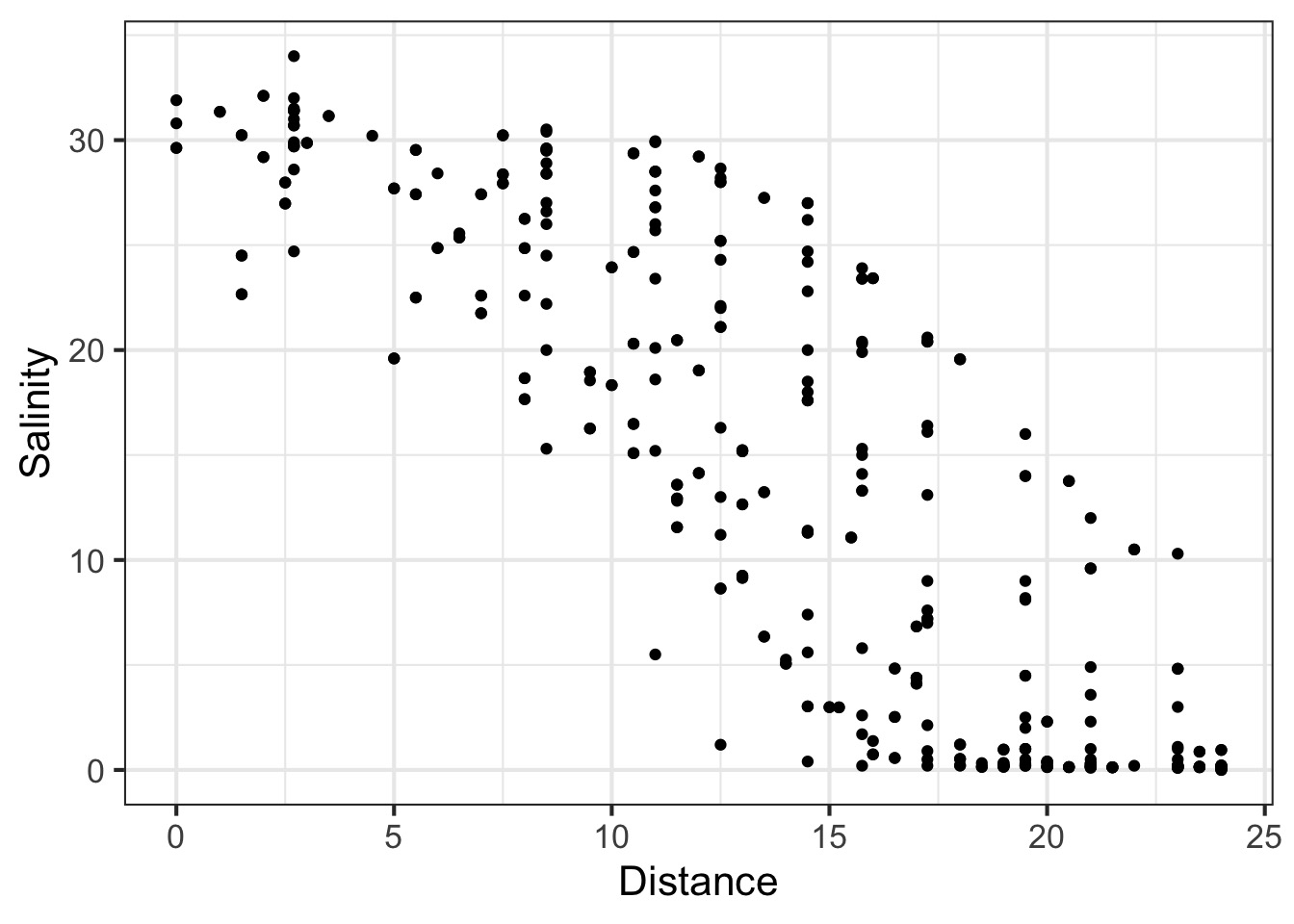
You’re starting to see something spatial…

Often within Relationships is a Pattern
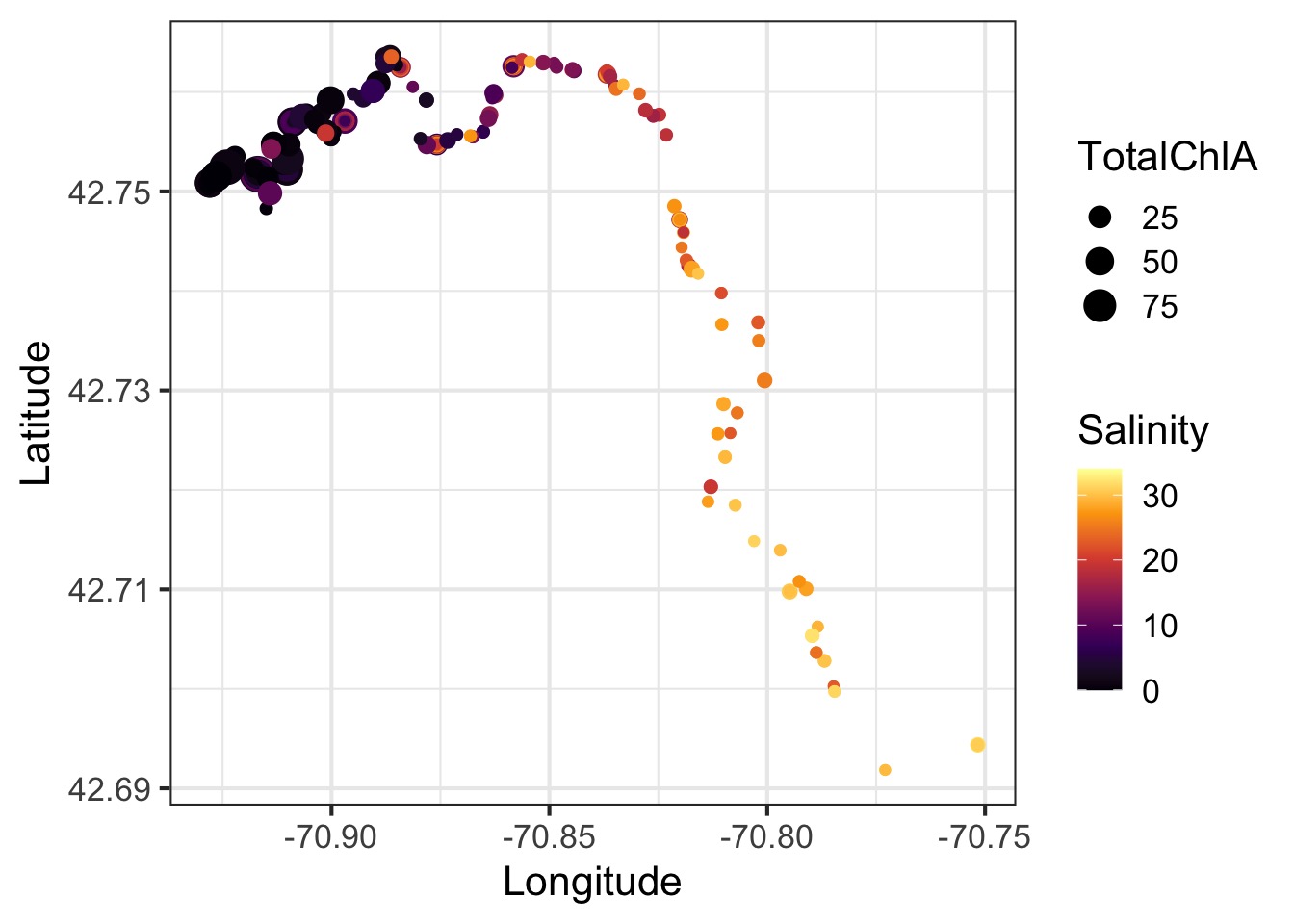
What do you learn from this that is new?
Context!

What do you learn from this that is new?
What does this tell you that a bar plot would not?
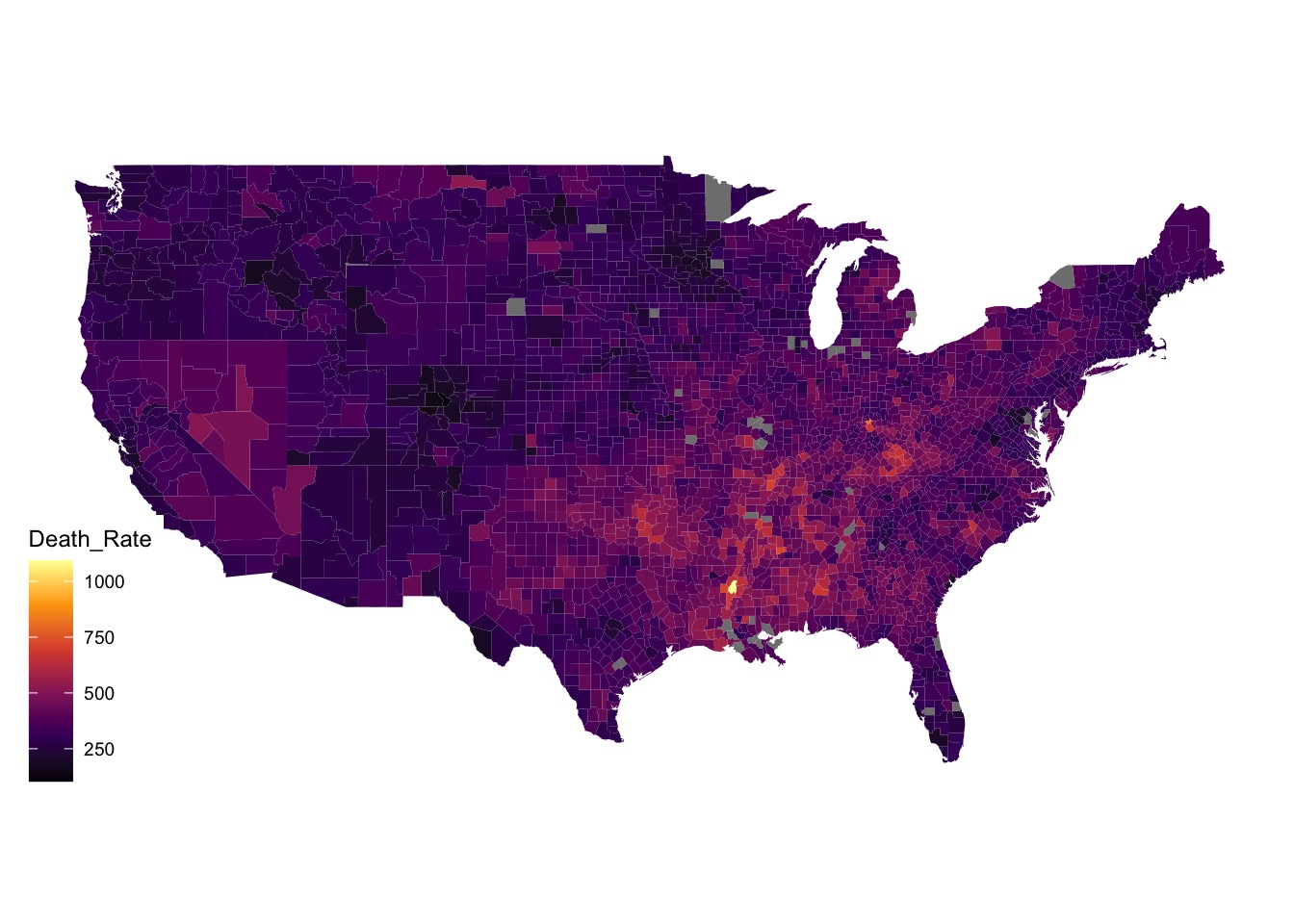
Objectives
- What is spatial data and how is it unique/new?
- What is vector data?
- What is raster data?
- What is a projection?
Types of Spatial Data
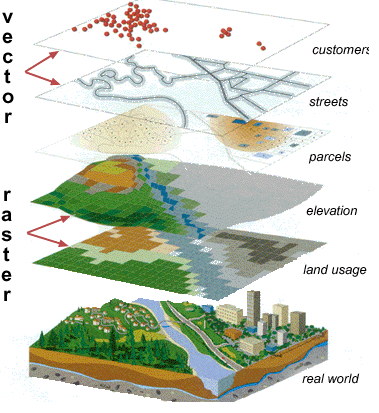
Points are Coordinates

Properties of Coordinates
- An x and y value
- A Projection
- An extent (minimum and maximum)
- Additional Information
Projections and Coordinate Reference Systems
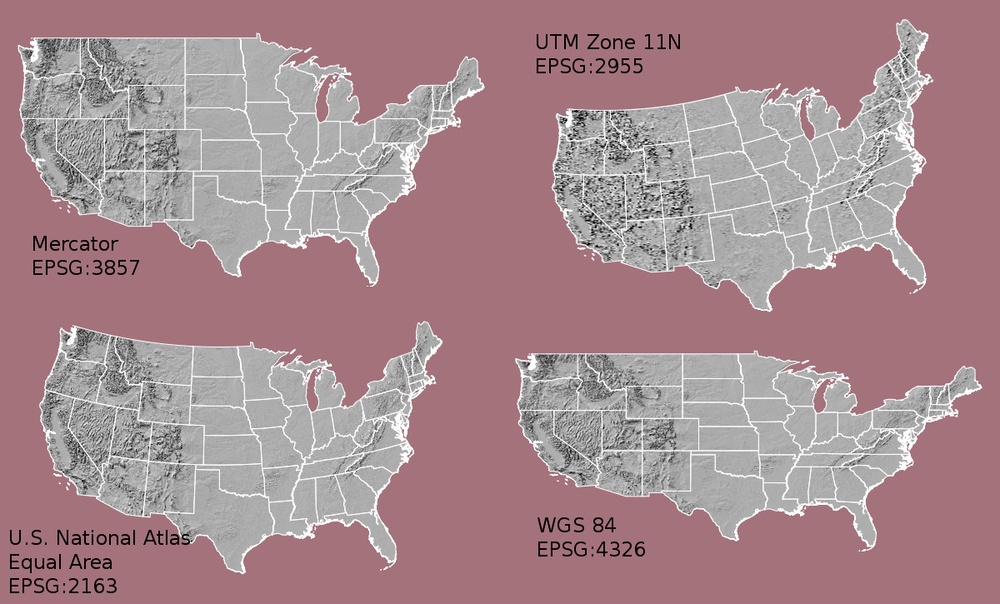
Extent

Additional Information in Points!
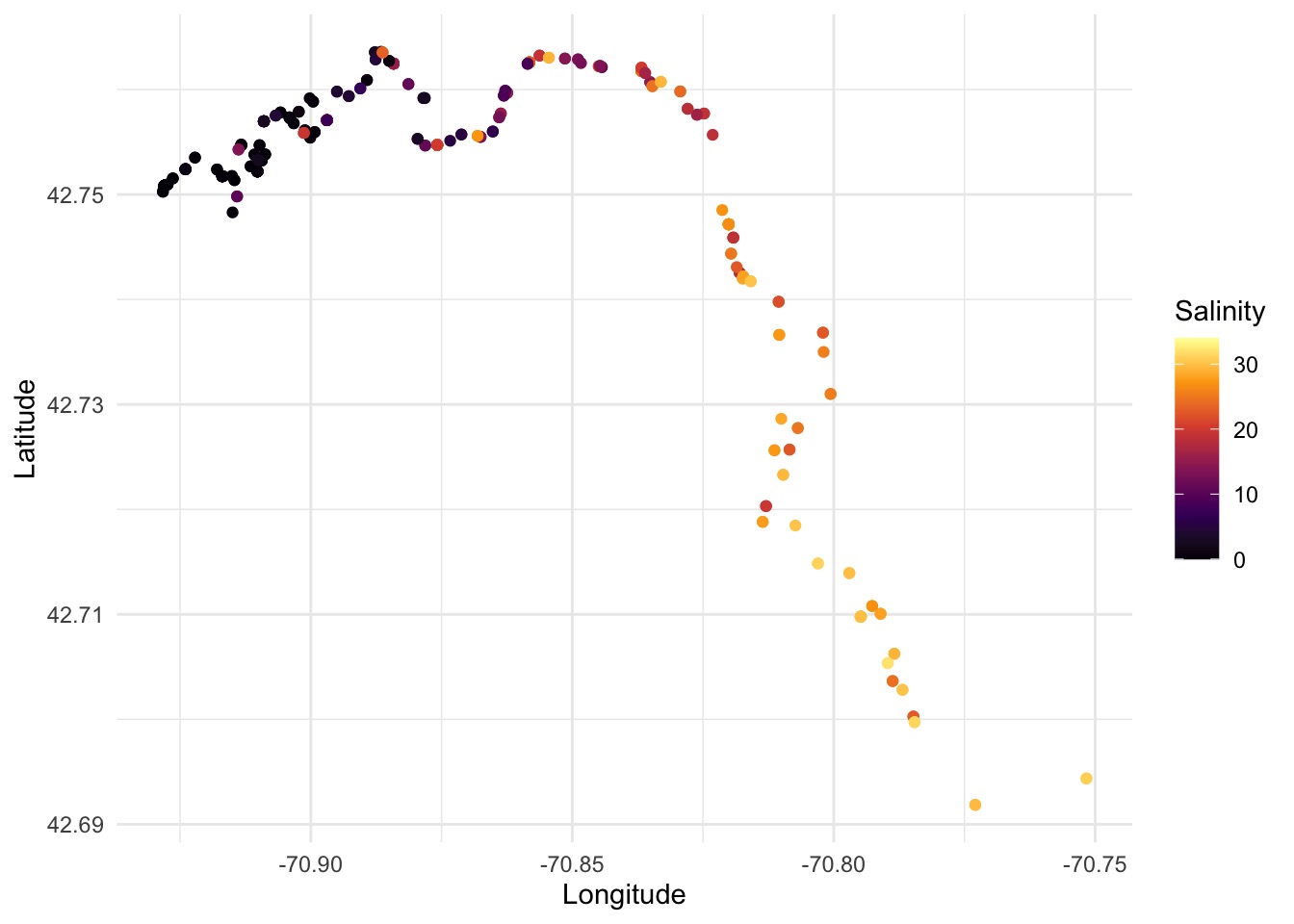
Lines Can Also Contain Information
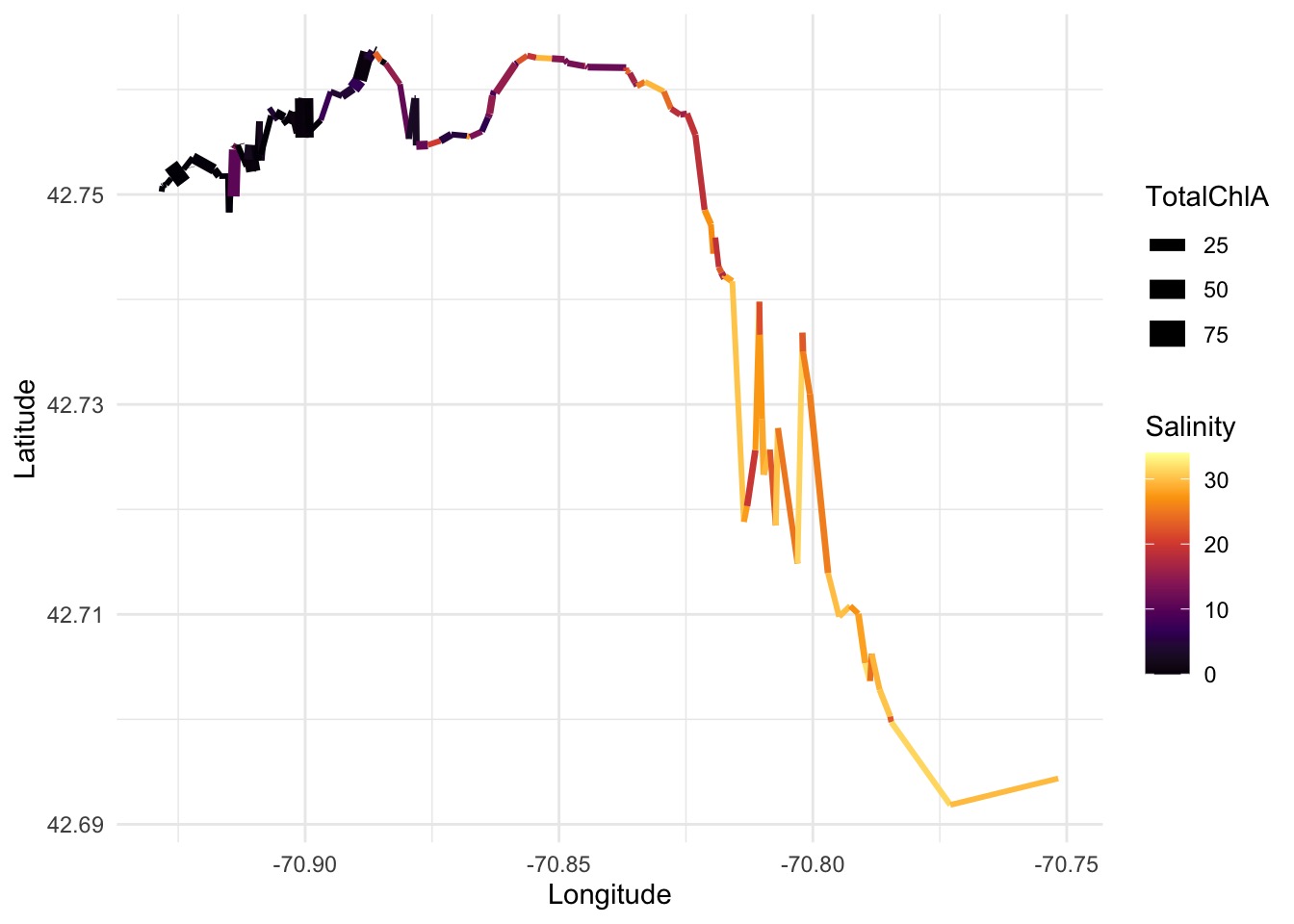
As can Polygons

Objectives
- What is spatial data and how is it unique/new?
- What is vector data?
- What is raster data?
- What is a projection?
Many Ways of Representing the Same Data
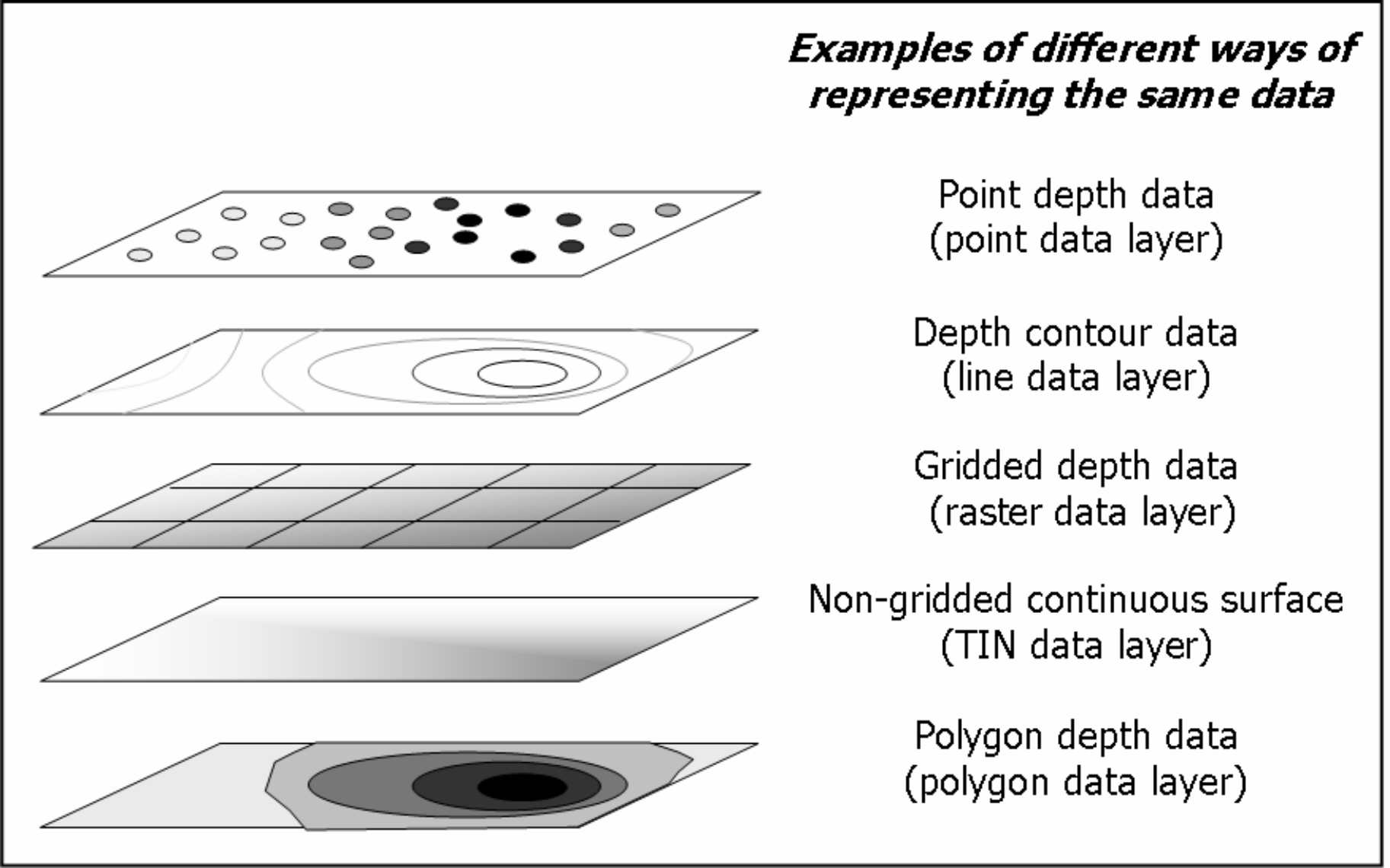
Vector Data
 {width = “75%”}
{width = “75%”}
More Complex Vector Data
 {width = “85%”}
{width = “85%”}
Points

Lines (Paths)

One Polygon

Two Polygons

Many Polygons

Many Polygons

This is just vector data

Exercise: Identify these Vector Types

Exercise: Identify these Vector Types
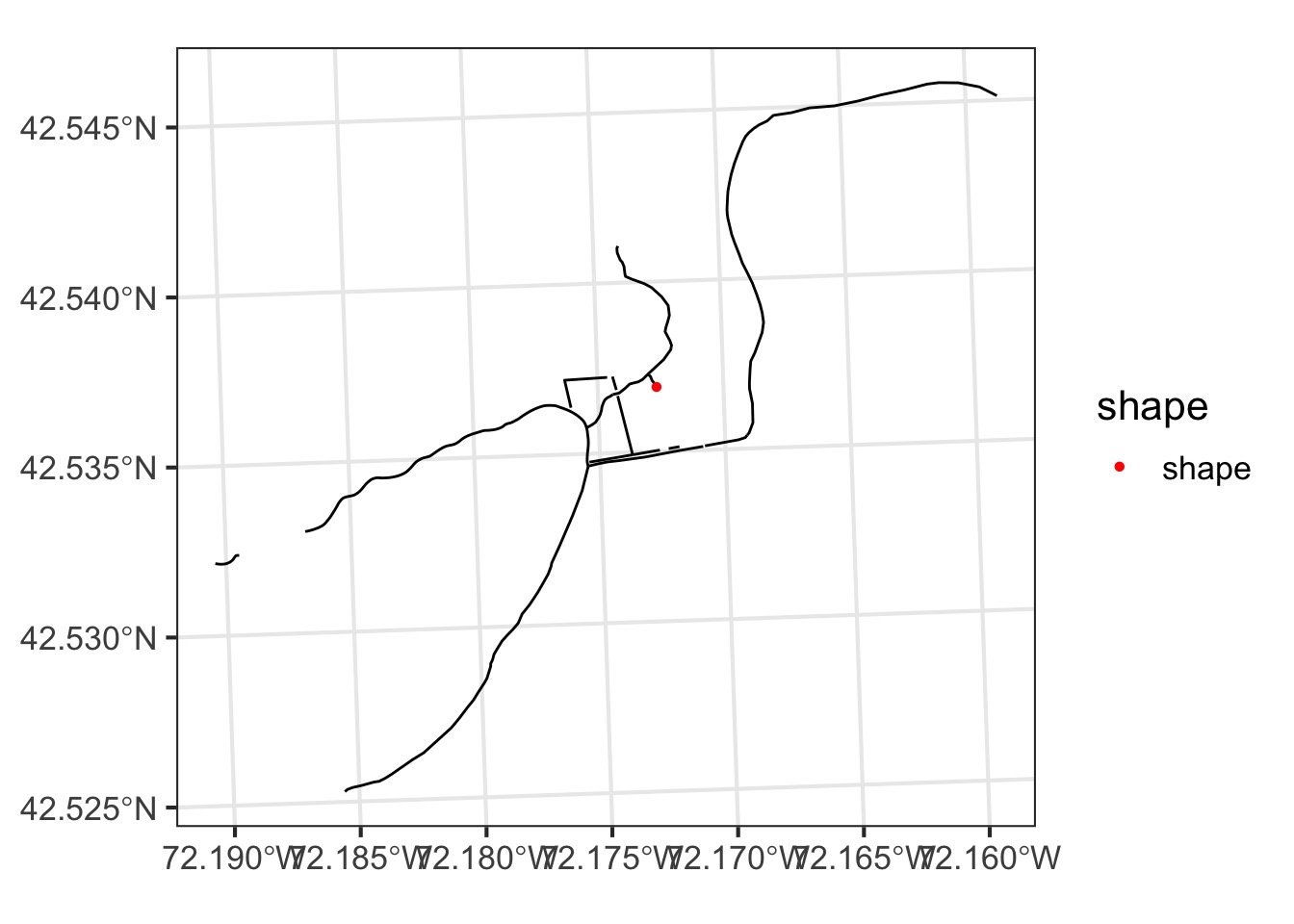
Objectives
- What is spatial data and how is it unique/new?
- What is vector data?
- What is raster data?
- What is a projection?
Rasters
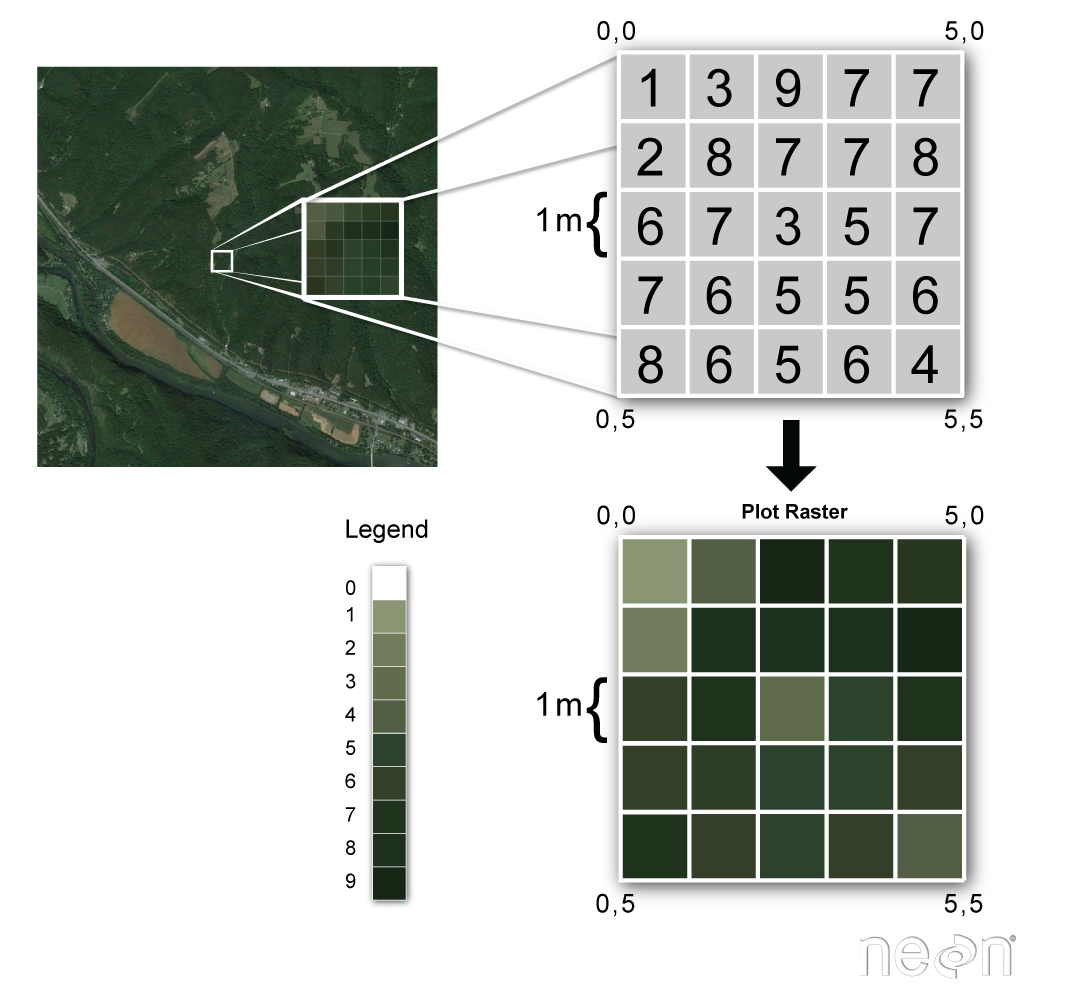
Rasters versus Vector Files
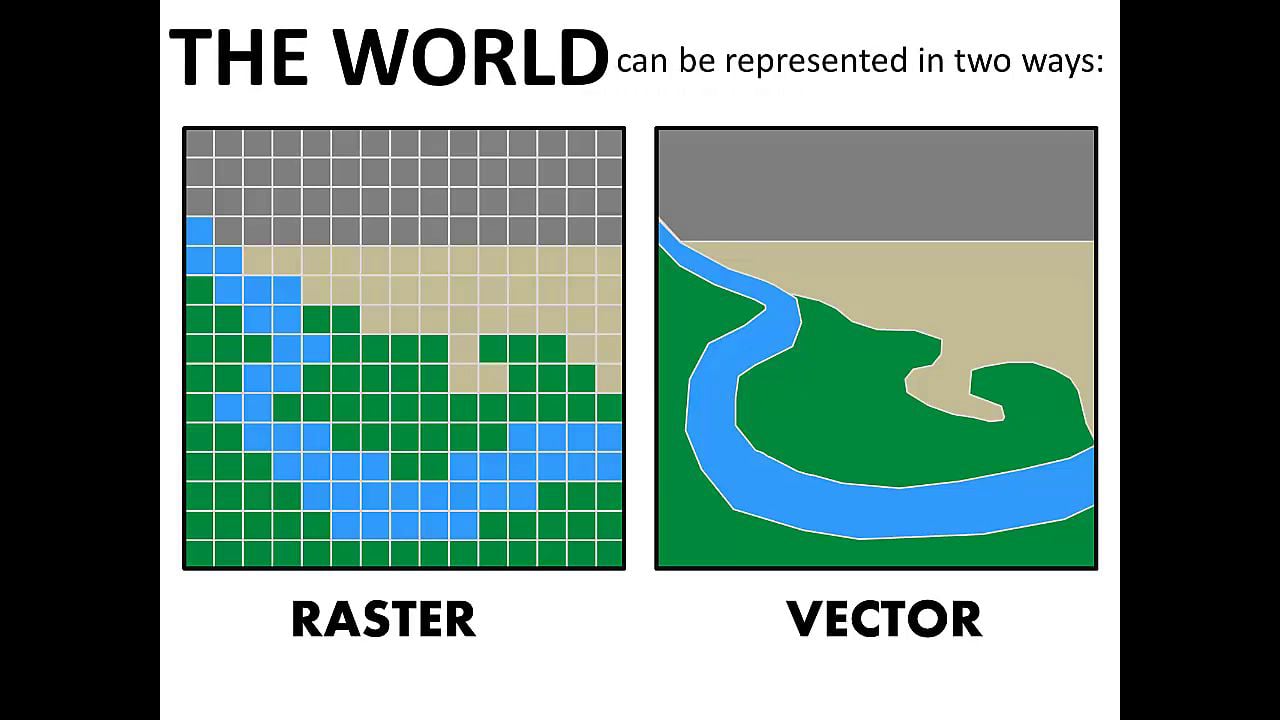
Rasters versus Vector Files

Raster Stacks/Bricks
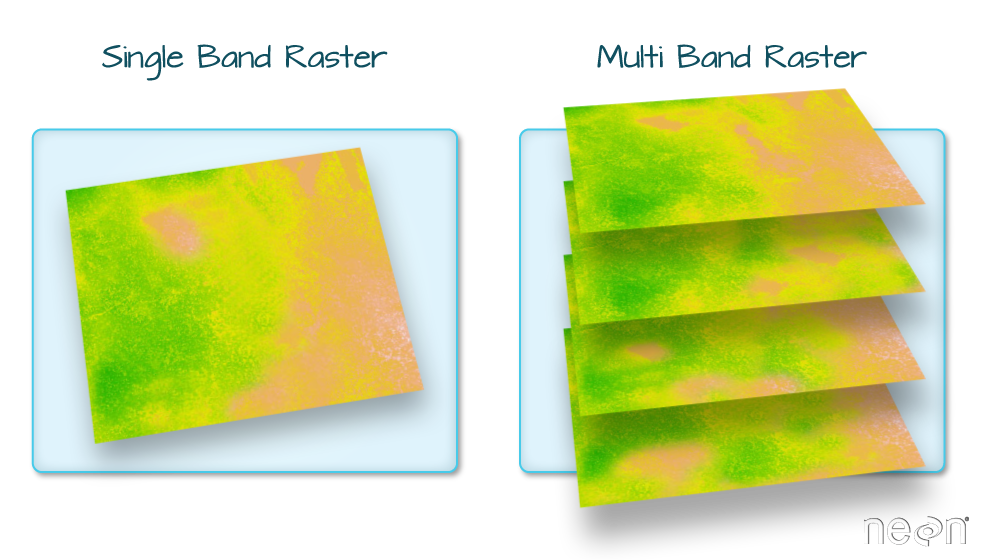
Multi-band Raster Data = RGB image!
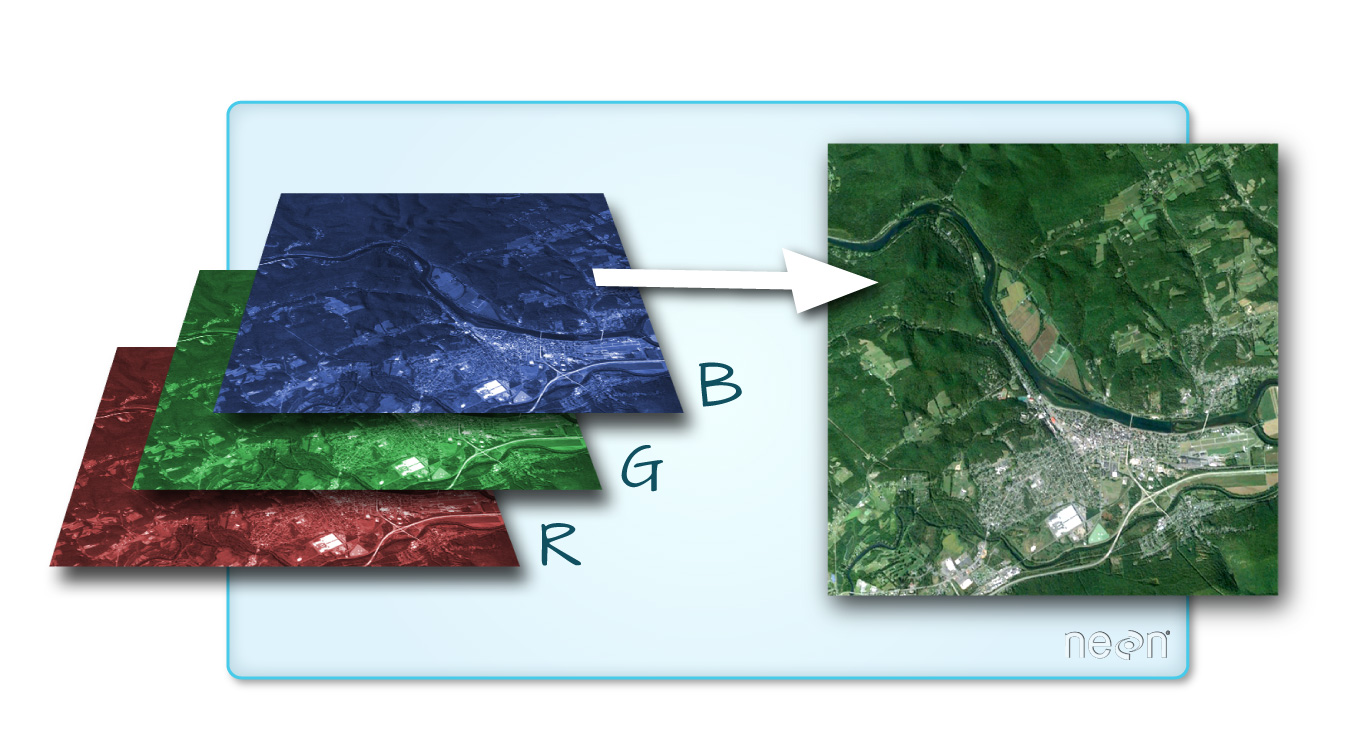
Individual Bands
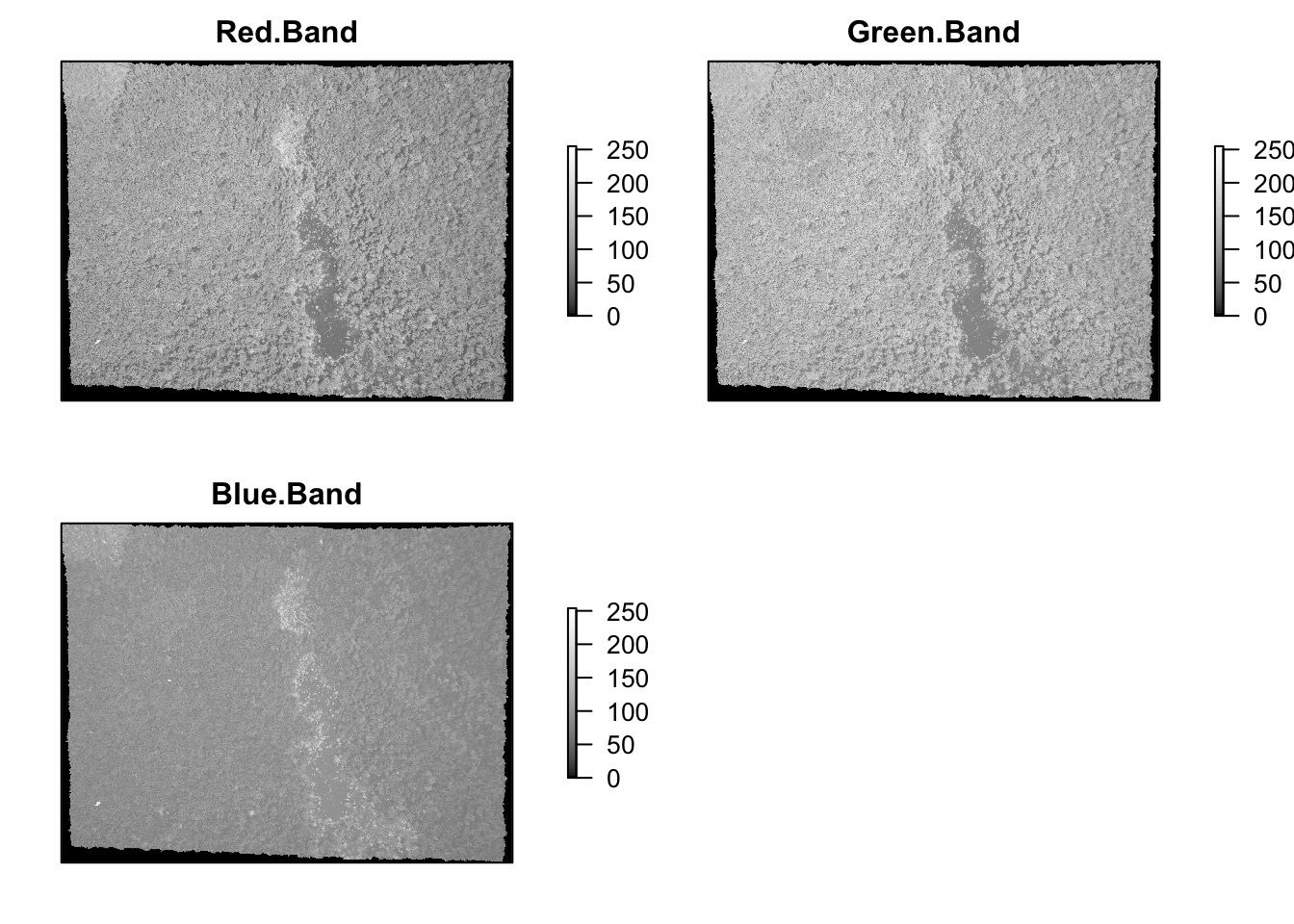
Composite Image

With rasters, we have to think of Resolution
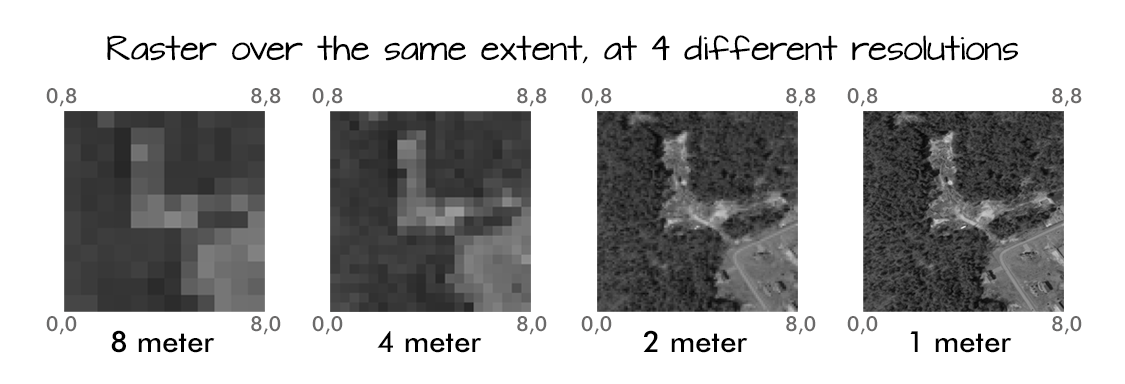
Resolution v. Extent (scale)
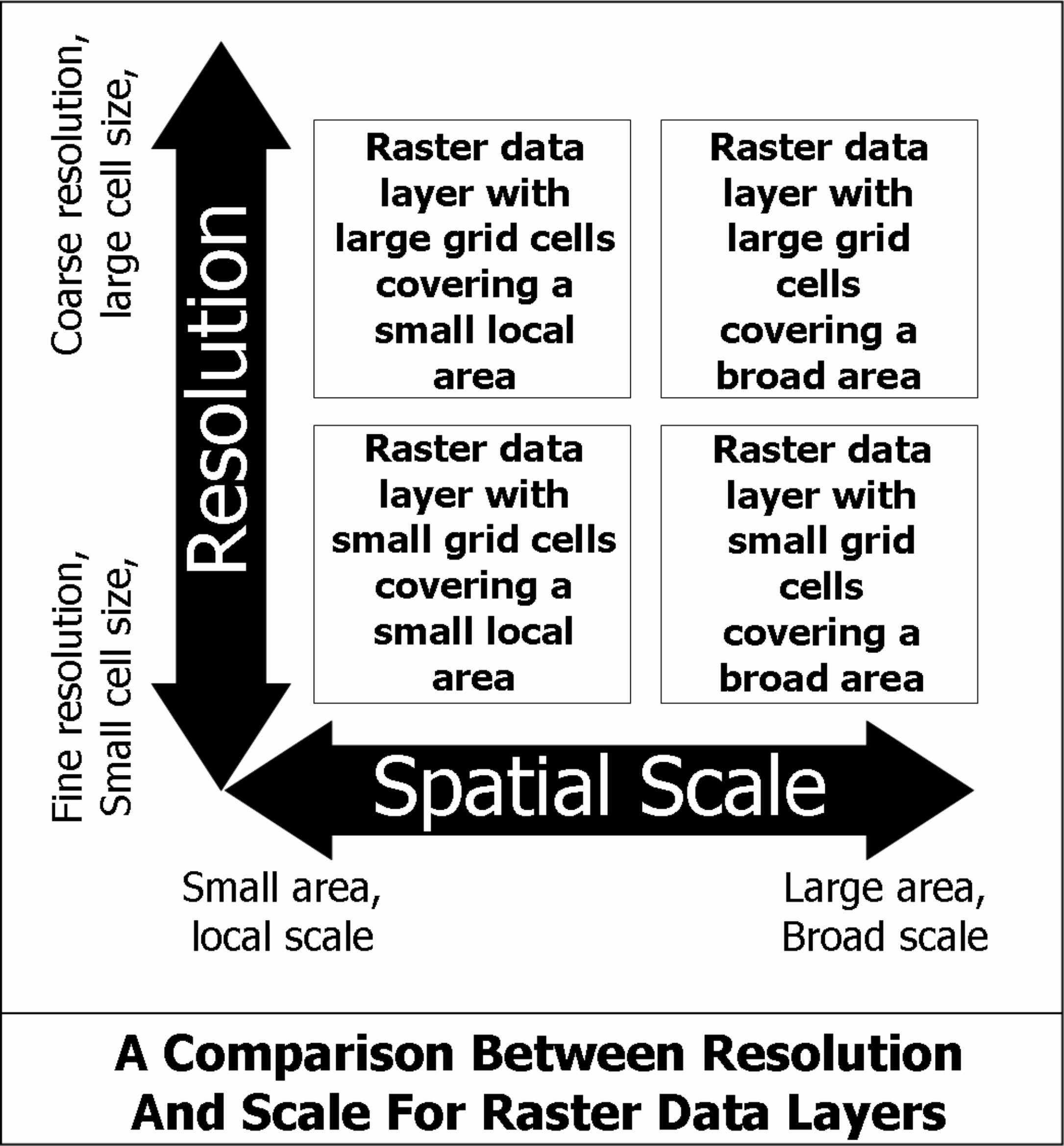
Why Rasters Versus Vector Formats
Filesize: Advantage Vector (smaller!)
Depth of Detail: Advantage Raster
Ease of Use in Analysis: Advantage Raster
Ease of Reprojection/Scaling: Advantage Vector
Ease of Creation: Advantage RasterObjectives
- What is spatial data and how is it unique/new?
- What is vector data?
- What is raster data?
- What is a projection?
Projections and Coordinate Reference Systems

Projections and Coordinate Reference Systems

Components of a CRS
CRS information has three components:
- Datum: A model of the shape of the earth.
- In this workshop, we will use the WGS84
datum
- In this workshop, we will use the WGS84
datum
- Projection: A mathematical transformation of the
angular measurements on a round earth to a flat surface (i.e. paper or a
computer screen).
- Additional Parameters: e.g., center of the map.
A datum is the choice of fruit to use

A projection is how you peel your orange and then flatten the peel
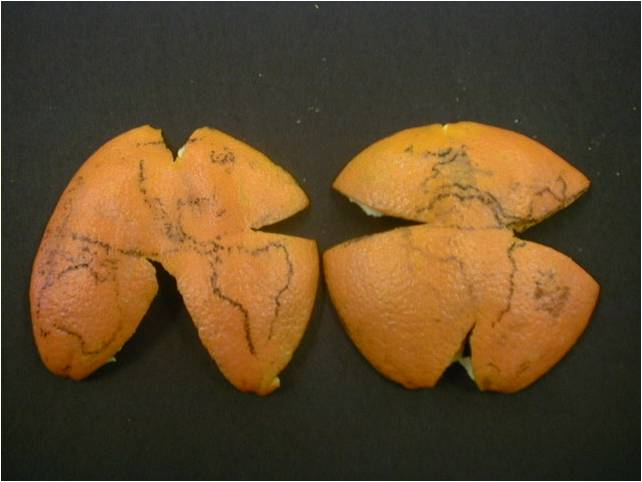
A PROJ4 string includes the following
- proj=: the projection of the data
- zone=: the zone of the data (this is specific to the UTM projection)
- datum=: the datum use
- units=: the units for the coordinates of the data
- ellps=: the ellipsoid (how the earth’s roundness is calculated) for the data
UTM Zones
You can do a lot with those parameters

See Jason Davies’s Map Projection Transitions - https://www.jasondavies.com/maps/transition/
Exercise: Reading a PROJ4 String
Here is a PROJ4 string for one of the datasets we will use in this
workshop:
+proj=utm +zone=18 +datum=WGS84 +units=m +no_defs
+ellps=WGS84 +towgs84=0,0,0
- What projection, zone, datum, and ellipsoid are used for this data?
- What are the units of the data?
- Using the map above, what part of the United States was this data collected from?
Need help choosing a projection
See http://projectionwizard.org/
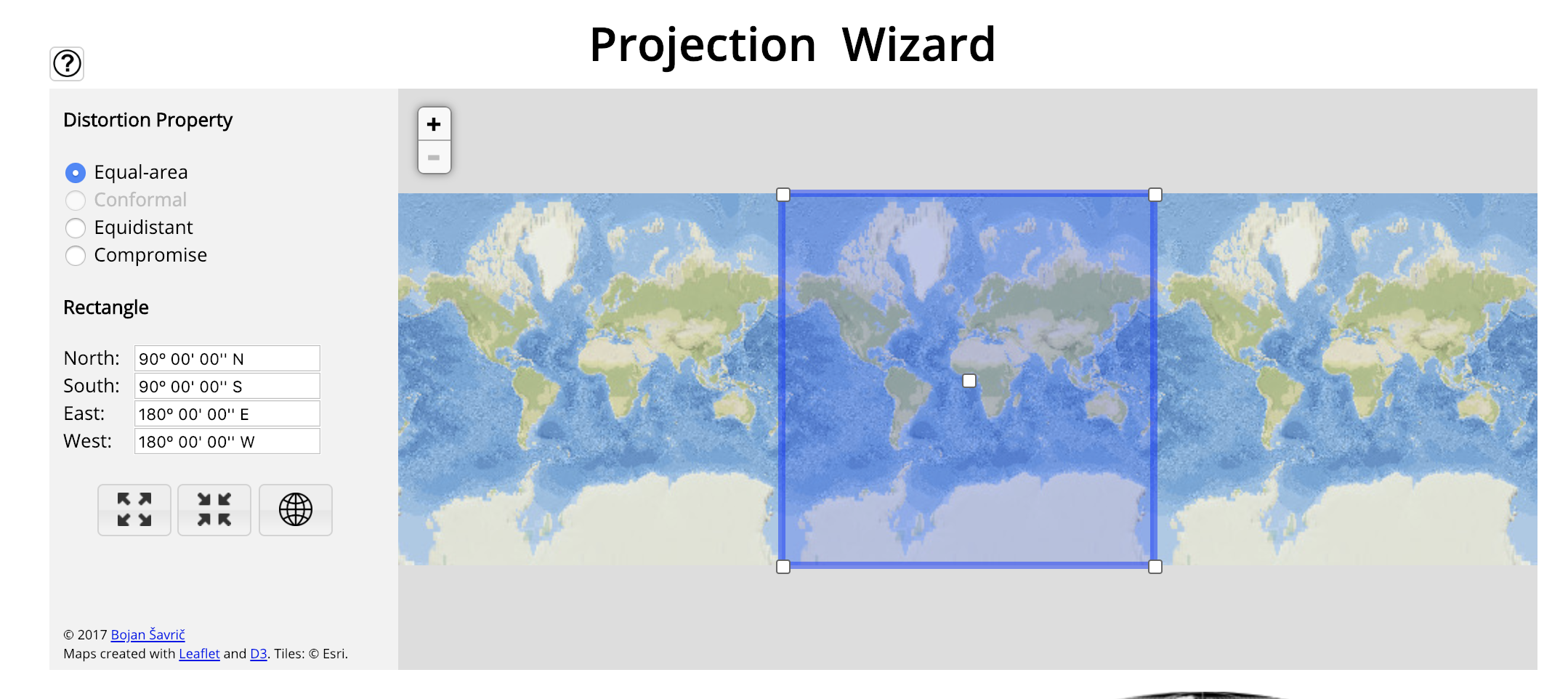
Additional Resources for Learning
- Geocomputation with
R by Lovelace et al.
- Great online book covering materials here in depth
- Great online book covering materials here in depth
- Spatial Data Science by
Edzer Pebsma and Roger Bivand
- Online book in progress by authors of many R spatial packages
- Covers emerging packages, such as
starsfor spatio-temporal rasters
- Online book in progress by authors of many R spatial packages